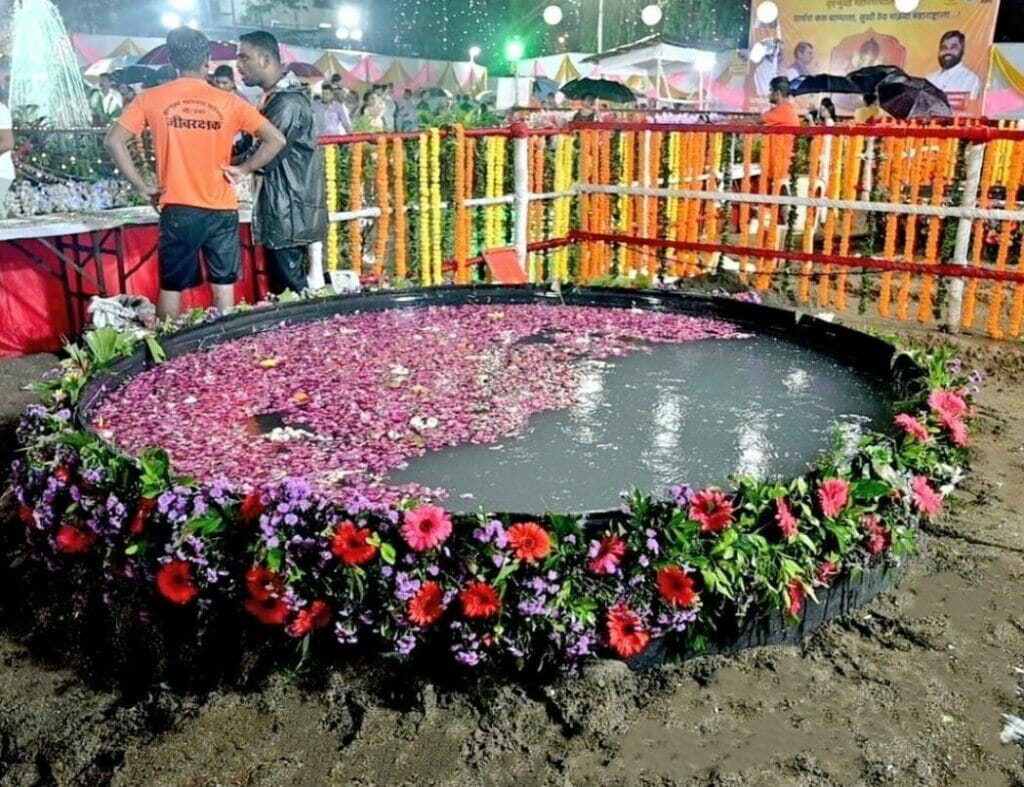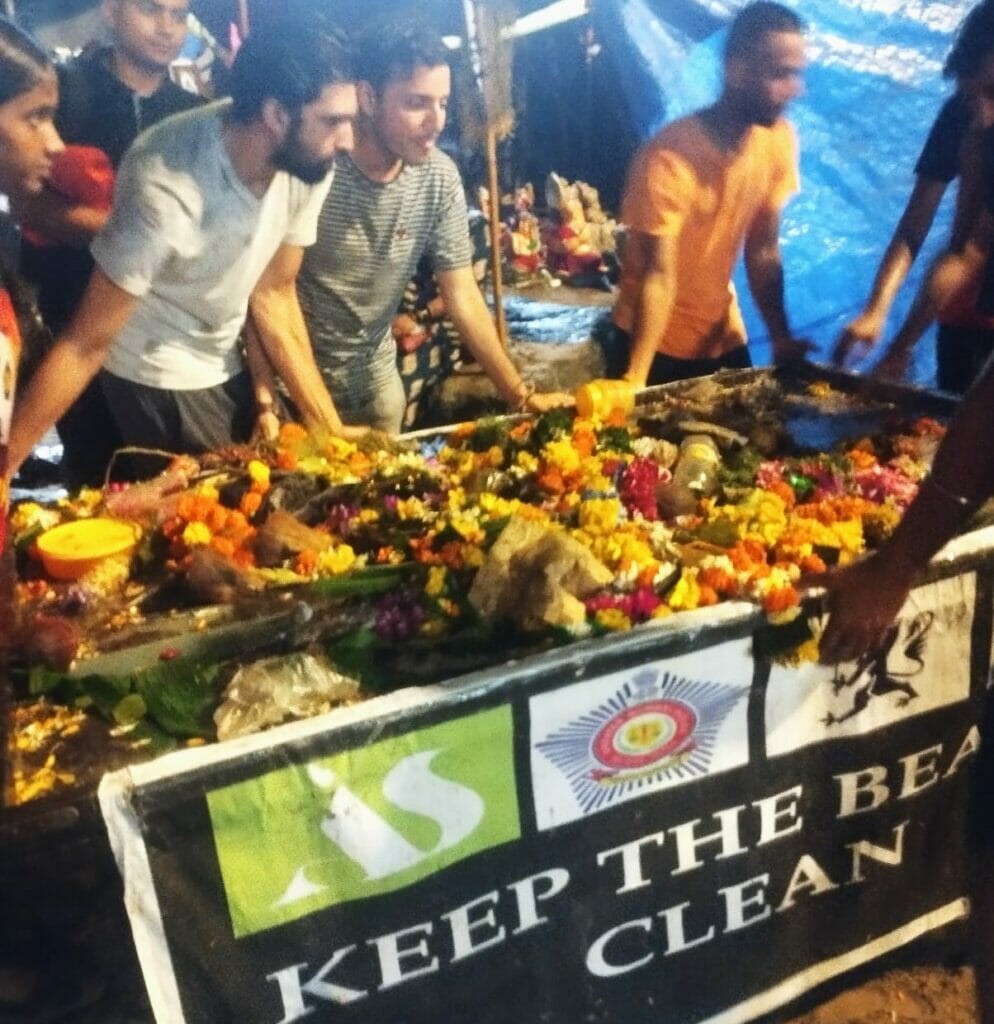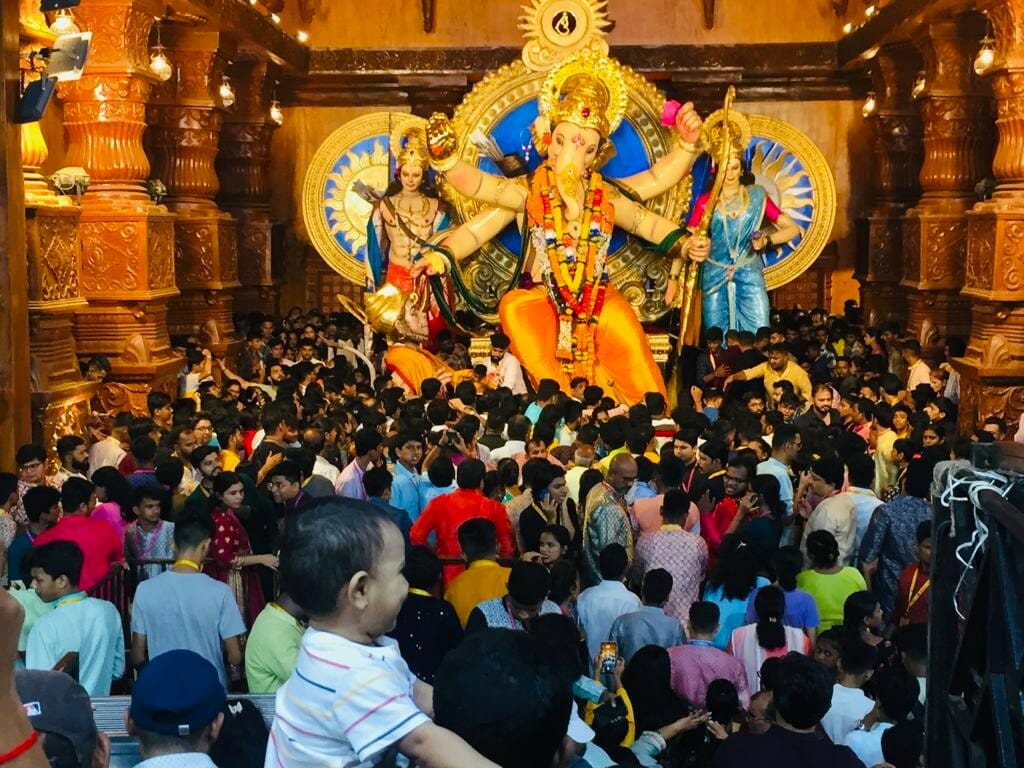As the 10-day Ganpati festival got over with much fanfare, we delve into its environmental impact and explore some of our stories related to the festival – city’s preparations for the festival, the push for eco-friendly Ganpati celebrations, and snapshots from this year’s festival, capturing the emotional farewells by devotees.
According to civic officials from Brihanmumbai Municipal Corporation (BMC), over 39,000 idols of Lord Ganesh were immersed in various water bodies on the last day, and more than 2,05,722 idols were immersed across Mumbai over ten days.
The Ganpati festival is commonly linked to significant environmental consequences. The idols are typically made from materials such as clay, Plaster of Paris (POP), plastic, and cement. Toxic paints are often applied to decorate these idols. When these idols are immersed, their materials don’t entirely dissolve in the water, resulting in environmental pollution. The non-biodegradable decorations made with thermocol sheets and plastic have long term adverse impact on the environment.
The use of loudspeakers during the festivities also contributes to increase in noise pollution.
However, in recent years, there has been a noticeable shift towards the adoption of sustainable practices and products within the context of the Ganpati festival. This transition reflects a growing awareness of the environmental consequences associated with traditional festival practices and a collective commitment to mitigate their impact on the surroundings.
Artificial pond emersion
This year too the BMC encouraged immersions in artificial ponds. Although many families and a few groups chose to immerse the idols in specially created artificial ponds, more efforts are needed to popularise this practice. That is the only way to reduce the pollution of natural water bodies.

This eco-conscious approach to immersion aligns with the broader commitment to environmental conservation by preserving its natural resources.
| Immersions in artificial ponds: Sarvjanik (public) idols immersed in artificial ponds : 740 Gharguti (household) idols immersed in artificial ponds : 10,207 Gauri idols immersed in artificial ponds : 160 Total idols immersed in artificial ponds : 11,107 |
Decrease in POP idols immersion in sea
Environmental activist Afroz Shah, who has led beach cleanup initiatives with volunteers for the past eight years, noted that the quantity of non-biodegradable Ganpati idols washing ashore this year was approximately 50% less compared to pre-pandemic years.
Afroz and his team of over 50 volunteers tirelessly worked to collect the waste that washed up along the expansive 2km stretch of Versova beach each day during the 10-day festival. They worked, not only on the days of immersion but also during the low tide periods when the idols, remnants, and associated debris became visible along the shorelines.

“Alongside the idols, we also collect plastics, flowers, both artificial and natural, and even fruits. After gathering this waste, we pass it on to the BMC waste collectors,” he said.
He further explained that in addition with their cleanup efforts, they engage in meaningful conversations with individuals who come to immerse POP idols. “We educate them about the detrimental effects of POP and encourage them to consider clay idols from the following year. Additionally, we suggest the use of metal idols, and have a symbolic immersion and reuse in the following years.”
Read more: BMC cleans Chimbai Beach after citizens’ appeal goes viral
Noise pollution
The use of loudspeakers during the festival has long been a subject of concern due to its adverse effects on noise pollution. This aspect of the festival’s environmental impact has gained increasing attention in recent years as urban areas have grown more conscious of the detrimental effects of excessive noise levels on both human health and the environment.
This year, the city experienced a slight reduction in noise pollution during the Ganpati festival compared to the previous year, although the levels still exceeded permissible limits. The Awaaz Foundation, an NGO dedicated to raising awareness about noise pollution and monitoring noise levels during festivals, celebrations, and rallies, conducted the measurements.
The highest noise level during the final day of Ganpati immersion this year was 114.7 dB in Matunga, down from 120.2 dB the previous year. According to the law, in residential areas, noise levels shouldn’t exceed 55 dB from 6 am to 10 pm and 45 dB from 10 pm to midnight. Also, the use of loudspeakers is prohibited after midnight.

Sumaira Abdulali, founder of Awaaz Foundation, said, “It’s a positive development that noise pollution decreased compared to last year, but it’s still significantly higher than the permissible limits.”
Overall, there is a noticeable shift over the years among Mumbaikars towards adopting sustainable and eco-friendly practices to minimise the environmental footprint of the Ganpati festival, marking a positive step towards more responsible and eco-conscious celebrations.
Previous stories
Bappa Moraya: City wants to celebrate, BMC gears for Ganesh festival
With the pandemic threat now largely behind us and life returning to normalcy, this year has witnessed a notable shift in the enthusiasm of citizens and approach of state and civic authorities towards the Ganesh Chaturthi festival. In contrast to previous years, many groups wish to celebrate and the officials have eased many restrictions, and also encouraged and promoted greater celebrations.
Link: https://citizenmatters.in/mumbai-bmc-ganesh-festival-regulations-56740
Mumbai steadily moves towards eco-friendly Ganpati celebrations
Read our story on how in recent years, there has been a notable shift towards embracing eco-friendly practices in the festival’s preparations, particularly in the material used for the creation of Ganpati idols. According to Mumbai murtikars (idol-makers), the sale of eco-friendly idols have almost doubled this year.

This shift marks a positive departure from the traditional use of Plaster of Paris (POP) idols, which can have detrimental effects on our water bodies after immersion.
The story also sheds light on various Eco-friendly initiatives practiced by citizens throughout Mumbai during the festival.
Link : https://citizenmatters.in/mumbai-eco-friendly-ganpati-celebrations-57077
Glimpses of how Mumbai celebrated Ganpati festival
A captivating photo essay that offers a glimpse into Mumbai’s vibrant celebration of the 2023 Ganpati Festival. This visual journey showcases the beautifully adorned idols, the dancing and chants of devotees, and the poignant moments of visarjan (immersion) at the beach.
Link: https://citizenmatters.in/mumbai-celebrates-ganpati-farewell-57232
Todays 09 Sep 2024 and its 10.45pm Ganpati emersion procession on Link Road, Near Sai Lee Hospital, Borivali W, is extremely loud and heart throbbing drums/trumpets. Im not exaggerating. With no prejudice Im writing. Leave alone the time frame of 10pm is violated which makes it worse for sr citizens who want to sleep. Hospitals are around. This is extremely bad
/selfish in simple words.